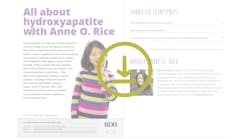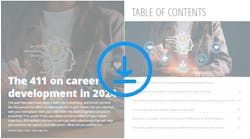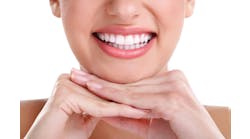By Lynne H. Slim, RDH, BSDH, MSDH
It’s been too long since I last visited my brother, Jeff, and his family in Portland, Ore., so I scheduled a trip on the spur of the moment and asked my mother to accompany me. One very special treat was watching my beautiful niece, Rachel, as she prepared to go to her senior prom. Appetizers, sparkling cider, and photos for Rachel and about dozen of her close friends, their dates, and parents were part of the evening’s events. My brother and his wife hosted the early evening affair. Senior proms today are very elaborate occasions, and the group even arranged for a party bus to take them to a fancy restaurant following the appetizer/photo op. Party buses come with space to dance, luxurious interiors, a surround sound system, laser, disco, and strobe lights. “Change” in prom traditions today, like the addition of a party bus, probably has a lot to do with some of the more affluent baby boomer parents meeting the needs of their generation Y offspring with cruise control frequency. The dance in the local high school proms with sherbet-topped fruit punch refreshment may be a thing of the past, and today’s parents probably spend a thousand bucks or more on these high school milestones!
In dentistry, there’s a new kid in town that is changing the way some clinicians practice. It’s a movement called evidence-based decision making (EBDM). To make a long story short, it’s an attempt to separate “infomercials” and anecdotal data from relevant clinical research in an effort to provide the best available care. By now, we’ve all heard about it, and we’ve also tried to read about it, too, but it’s often one of those topics that is a good substitute for a sleeping pill when insomnia rears its ugly head.
I recently attended the Third International Conference for Evidence-Based Dentistry at ADA Headquarters in Chicago, and expected to snooze through some of it, but was very pleasantly surprised! I also didn’t expect to hear anything new on the subject, but I learned that I wasn’t as well-versed in the subject as I thought I was. The main focus of the two-day program was an effort to bridge the gap between evidence-based knowledge (which is growing rapidly) and patient care decision-making, with a goal of implementing filtered, evidence-based clinical decision support in the foreseeable future.
I met a lot of professorial type folks who, like me, enjoy the scientific/academic side of dentistry. The speakers were outstanding and came from different health disciplines. In Part II (to be continued next month), I’m going to focus on one of them who just happens to be a periodontist. What made him unique and important to this conference’s proceedings was his commitment to EBDM in his periodontal practice in San Francisco.
In the meantime, if you’ll bear with me, I’ll tell you a little bit about what I learned. Keep in mind that I’m a novice, so let’s consider this a shared journey. I will continue to write about this topic as I learn more about it. The opening speaker, Dr. Paul Warren, vice president of global professional and scientific relations, oral care, Procter & Gamble, made me laugh early on when he commented that there wasn’t much opportunity for critical thinking when he attended dental school, because “we’d only just discovered gums.” He mentioned that we now have more than 130-plus EBD champions in dentistry all over the world, including Africa, and these individuals support the transfer of evidence-based knowledge among their peers in their respective communities.
Dental professionals, including hygienists and many consumers, are increasingly driving the demand for access to reliable information so they can make informed decisions. Clinical decision support (CDS) refers to a variety of printed and electronic tools that make “filtered” knowledge and information available to the user. CDS might include materials that we don’t always think about, including computerized alerts and reminders, clinical guidelines, clinical workflow tools, and secondary evidence-based journals like The Journal of Evidence-Based Dental Practice. At the point of care (an important evidence-based term), CDS facilitates good quality, evidence-based decision making. One example of a CDS application that has saved about $2 billion a year by minimizing adverse drug reactions is e-prescribing. It is well-known that adverse drug events are among the leading causes of death in the United States, according to the conference moderator, Michael G. Newnan, DDS. In fact, several studies have reported that between 44,000 and 98,000 deaths each year are the result of some form of medical error, and medication-related errors are the number-one contributor to these deaths. E-prescribing is one way to prevent thousands of deaths each year from medical errors.
My ears perked up when Sebastian Vos of Elsevier Publishing spoke about what changes he believes need to take place in postsecondary education. He pointed out that the days of memorizing what was in “the textbook” need to be replaced with teaching methodologies that focus on engaging students and preparing them for evidence-based-driven, fast-paced practice environments. He also talked about how students can no longer sit back and learn passively, and he also emphasized that instructors need to convert from “Sage on the Stage” to “Guide on the Side.”
Many of us are being increasingly challenged by patients who present with reams of Internet paperwork on a given topic and challenge our decision. The advantage of keeping the best available research evidence handy with the click of a mouse increases decision support for patients and will increase their confidence in you.
Philippe Hujoel, professor, University of Washington, School of Public Health, is a captivating speaker who talked about translating basic science to clinical research and then putting evidence into practice. Typically, he said, it takes about 17 years for new knowledge generated from randomized clinical trials to be put into practice, and that’s a very long time! Like Bill Murray in the comedy/drama “Lost in Translation” in which the actor is uncertain about the direction of his life, a clinician can get totally confused when confronted with vast quantities of unwieldy information. Sometimes we need tools and direction to facilitate the translation of unmanageable facts and figures into data that can be used to support decision making, and we often ponder the question: “How much evidence do I need before I can act and try it out on a patient?” We need to keep searching for more and better evidence from sound epidemiology and systematic reviews of the literature.
Where can a hygienist detective find clinicial decision support systems online? Some good resources include the Cochrane Oral Health Group (http://www.ohg.cochrane.org), PubMed (www.nlm.nih.gov/bsd/disted/pubmedtutorial), and the American Dental Association. The ADA has created a temporary Web page as they work to develop an enhanced EBD Web site (http://www.ada.org/prof/resources/ebd/index.asp). This new content area features a searchable directory of systematic reviews, a glossary of terms, and additional resources on evidence-based dentistry. The project is supported with a grant from the National Library of Medicine.
Is EBDM just a trend, or is it here to stay? If you google EBDM and medicine, you will see how EBDM has gained momentum since the 1980s when medical students started applying the principle in clinicial problem solving. Since then, it has continued to grow to the point where it is now incorporated into areas like economics, public policy, and education. Dentistry, like medicine, seems to be following the same path.
About the Author
Lynne Slim, RDH, BSDH, MSDH, is an award-winning writer who has published extensively in dental/dental hygiene journals. Lynne is the CEO of Perio C Dent, a dental practice management company that specializes in the incorporation of conservative periodontal therapy into the hygiene department of dental practices. Lynne is also the owner and moderator of the periotherapist yahoo group: www.yahoogroups.com/group/periotherapist. In addition, Lynne is the editor of the Sunstar Americas e-newsletter “The GUMline.” Lynne speaks on the topic of conservative periodontal therapy and other dental hygiene-related topics. She can be reached at [email protected] or www.periocdent.com.








